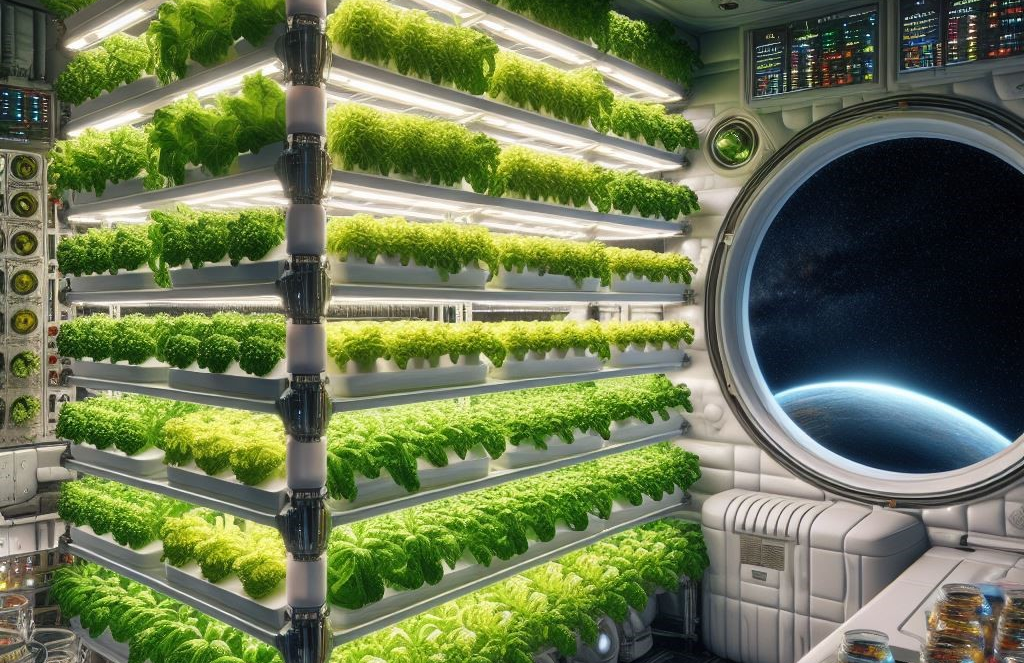
Solving the million ton space puzzle

An army can't march on an empty stomach
- Dateline
- 13 January 2033
As basic as it might sound, until we solve cryogenic sleep, the key to space travel and colonizing asteroids and far off planets involves food… tons and tons of food! An average human needs 2,500 calories per day, or roughly 4.5kg. So, for a round trip to Mars, estimated to take 14 months, there needs to be about 1,860kg of food per person on the ship. If we round the total up to 2 tons (per person), we can also spend one month on (or around) Mars for work or research.
While trying to minimize the weight of food required for long space trips, initial experiments in the mid ‘20s ruled out the freeze dried, the tubed, and the nutritional pills, as it was found that the process of eating not only provides us with energy, but our mental health is also vastly improved by the variety of food we eat and the social aspects of sharing a meal with other people. Casually squeezing a tube of nutritional paste into your mouth while hanging upside down just doesn’t cut it!
Luckily for our taste buds, how to grow food in zero gravity was solved in 2020, and gravoponics (zero-gravity hydroponics) and lab-grown meat came to the space travelers’ rescue. Food is now grown as and when needed using a circular food ecosystem where everything (yes, everything!) is recycled and reused, thus limiting nutritional additives and drastically reducing the food ratio of the spacecraft’s payload.
Gravoponics has become one of the ship’s critical systems, where potatoes, veggies, and fruits rooted in hydrogel are immersed in nutrition-rich mist, robotically pollinated to produce seeds for the future. The crops are carefully harvested to ensure maximum yield, while tasty steaks and chicken nuggets grow in the lab next door.
While the world marveled at massive, reusable rockets from SpaceX, the agri-tech wizards, who quietly plodded on out of the limelight, took a hipster fad from the early ‘20s and delivered one of the keys to unlocking interstellar space travel and colonization.
Now we just need to solve two remaining obstacles and we are ready for lift off. Can we find a solution to the years-long boredom problem, and can we develop simple and reliable technology that can be used and maintained generation after generation on interstellar spaceships and habitats?
Warning: Hazardous thinking at work
Despite appearances to the contrary, Futureworld cannot and does not predict the future. Our Mindbullets scenarios are fictitious and designed purely to explore possible futures, challenge and stimulate strategic thinking. Use these at your own risk. Any reference to actual people, entities or events is entirely allegorical. Copyright Futureworld International Limited. Reproduction or distribution permitted only with recognition of Copyright and the inclusion of this disclaimer.